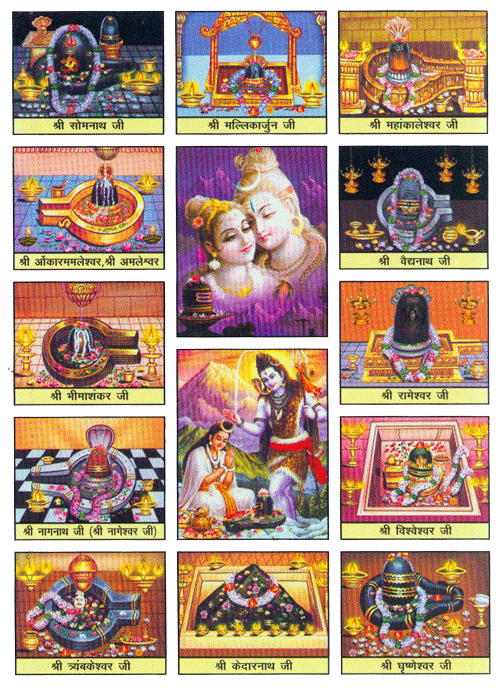Aghora is the destructive aspect of Shiva. He is often depicted as the Keeper of burial and cremation grounds and is associated with death. He is said to devour life and make way for new creation or regeneration. He faces South on a Panchamukha Sivalingam.
Ishana is omnipresent and omnipotent. He is depicted as an all-pervading and eternal Shiva. He is cause of creation. He faces the north-east on a Panchamukha Sivalingam.
Tat purusha is the ego aspect of Shiva. Associated with meditation, enlightenment this form is often associated with sages, ascetics and celibacy. He faces east on a Panchamukha Sivalingam.
Vamadeva (Varna Deva) is the female aspect of Shiva. He is graceful and is associated with water. He faces north on a Panchamukha Sivalingam. He is a healer and bestower of health both mental and physical.
Rudra (Sadyojata) is the creative and destructive power of Shiva. He is associated with wrath and anger. He faces west on a Panchamukha Sivalingam.
On this day manifested the great & also the first ever effulgent (Jyotirmaya) form (Anala-skanda or a pillar of fire) of Lord Shiva in front of Lord Vishnu & Brahmaji.
The story goes that once both Vishnuji & Brahmaji, got infected by ego. The result was an clash between both these gods. In order to show their respective superiority they decided to fight it out. Lord Shiva decided to intervene so as to make them realise that there is something more to life than the powers of an embodied beings. He manifested in the form of a huge pillar of fire (Anala-skanda) whose beginning and end could not be seen. Vishnuji & Brahmaji decided to check what this strange thing was. While Vishnuji, in the form of varaha (boar) went down towards patal-loka to see the end of this pillar, Brahmaji sitting on his swan went up. Even after years of travel they could not see the beginning or the end of this manifestation. Brahmaji saw a leaf falling off, and thought it fell down from the top of pillar of fire, and returned satisfied that he had seen the starting point. They came back, while Lord Vishnu accepted that he could not see the end, Brahmaji said that he had seen, which was a lie. Lord Shiva cursed Brahmaji that no will ever worship him. Then he too surrendered. This manifestation of Lord Shiva in the form of the first effulgent linga was on this special day of Mahashivratri, and thus all devotees pray to the effulgent linga (jyotirlinga) of Lord Shiva.
King Daksha, opposed Sati's marriage with Shiva. At a yagna (holy sacrifice) the king ignored Shiva's presence and thereby insulted the latter publicly. Sati was so angered by this that she jumped into the sacrificial fire and ended her life. Lord Shiva unleashed his fury at the death of his wife by performing the violent dance, Tandava. He wiped out Daksha's kingdom, undertook rigorous penance and retired to the Himalayas. The Gods, who feared that the severity of Shiva's penance might bring an end to the world, revived Sati in the new avatar of Parvati. Shiva-Parvati married and this reunion is celebrated on Maha Shivaratri
During Samudra Manthan by the gods and demons, a highly toxic poison came out of the ocean. As per the advice of Lord Vishnu, gods approached Lord Shiva and prayed him to protect life by consuming this poison. Pleased with their prayers, out of compassion for living beings, Lord Shiva drank this poison and held it in his throat by binding it with a snake. The throat became blue due to the poison (Thus Lord Shiva is also know as Neelakantha) and Shiva remained unharmed. The wise men advised gods to keep Lord Shiva awake during the night. To keep him awake, the gods took turn performing various dances and playing music. A vigil was thus kept by the gods in contemplation of Shiva. As the day broke out, Shiva, pleased with their devotion blessed them all, and also said that whosoever worshipped & contemplated on him on this day shall be blessed with the fulfillment of his or her wishes. Since then, on this day and night - devotees fast, keep vigil, sing glories of Lord and meditate.
In the Shanti Parva of the Mahabharata, Bhishma, whilst resting on the bed of arrows and discoursing on Dharma, refers to the observance of Maha Shivaratri by King Chitrabhanu. The story goes as follows.
Once upon a time King Chitrabhanu of the Ikshvaku dynasty, who ruled over the whole of Jambudvipa, was observing a fast with his wife, it being the day of Mahashivratri. The sage Ashtavakra came on a visit to the court of the king.
The sage asked, "O king! why are you observing a fast today?"
King Chitrabhanu explained why. He had the gift of remembering the incidents of his previous birth.
The king said to the sage: "In my past birth I was a hunter in Varanasi. My name was Suswara. My livelihood was to kill and sell birds and animals. One day I was roaming the forests in search of animals. I was overtaken by the darkness of night. Unable to return home, I climbed a tree for shelter. It happened to be a bel tree. I had shot a deer that day but I had no time to take it home. I bundled it up and tied it to a branch on the tree. As I was tormented by hunger and thirst, I kept awake throughout the night. I shed profuse tears when I thought of my poor wife and children who were starving and anxiously awaiting my return. To pass away the time that night I engaged myself in plucking the bel leaves and dropping them down onto the ground.
"The day dawned. I returned home and sold the deer. I bought some food for myself and for my family. I was about to break my fast when a stranger came to me, begging for food. I served him first and then took my food.
"At the time of death, I saw two messengers of Lord Shiva. They were sent down to conduct my soul to the abode of Lord Shiva. I learnt then for the first time of the great merit I had earned by the unconscious worship of Lord Shiva during the night of Shivratri. They told me that there was a Lingam at the bottom of the tree. The leaves I dropped fell on the Lingam. My tears which I had shed out of pure sorrow for my family fell onto the Lingam and washed it. And I had fasted all day and all night. Thus did I unconsciously worship the Lord.
"I lived in the abode of the Lord and enjoyed divine bliss for long ages. I am now reborn as Chitrabhanu." I have now realized about the infinite love & compassion of Lord Shiva. Even unconscious acts of goodness are blessed in such a way, then what to talk of our conscious acts of expressing our love, respect and reverence for Lord Shiva. He is indeed Ashutosh, one who gets pleased very soon. Lord Shiva is indeed an embodiment of infinite love, love & compassion, that is why he is so easy to please. He showers us with his blessings at every moment of our lives, may we all devote this day of Mahashivratri to express our gratitude unto his feet. It is a very auspicious day.
Maha is the Big One, Shiv means auspiciousness, and Ratri means night; this is a day when we awake to the most auspicious truth within ourself. Night stands for darkness i.e. ignorance, in which all beings sleep & then dream. Our present transmigratory existence and limited individuality is nothing but a big dream. Freedom is never by some unique or scintillating experiences in this dreamy realm of existence, but only by waking up to that which is not a product of mind. That which is not a product of mind is the Self, the Atma. Mandukya Upanishad calls that non-relative truth of Self as Shiva. That is referred to as the fourth state of the Self, the Turiya. It is the most auspicious one, knowing which one truly wakes up and gets 'as though' liberated. One who knows the Atma as Brahman alone is a liberated one.
The other three states apart from the Turiya are the waking, dream and the deep sleep states - when we turn extrovert and try to get experiences from the things around, revel in our imaginary worlds, or just switch off and rest, respectively. The fact that the special sadhana of this day has been kept for night implies that we need to simulate deep sleep, i.e. no flights of mind as in waking or dream states. Turn away from all experiences, physical or mental and just become quiet. No responsibilities, no desires, no burden to achieve anything, no roles to play, no regrets, no aspirations - just as in deep sleep but all consciously. When all relative roles and their corresponding thoughts are kept aside and the mind is quiet, then that which remains is that which is not a product of our minds - the Shiv tattva, the turiya, the auspicious one. Let us awake to that and realize it to be our real Self, thereafter, let this free and awakened mind respond to any situation around, there will be just the fragrance of auspiciousness in everything. That will be the real celebration of Mahashivrati.




















comment:
p_commentcount